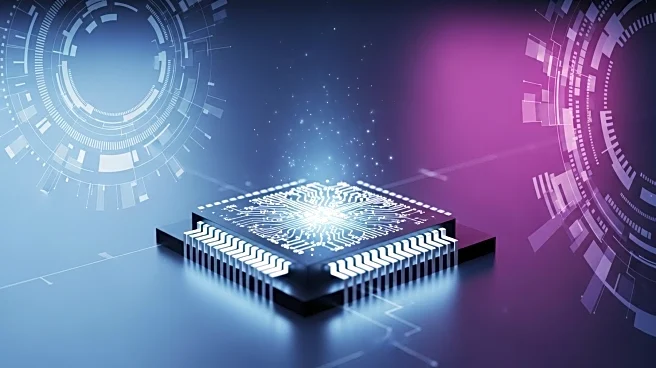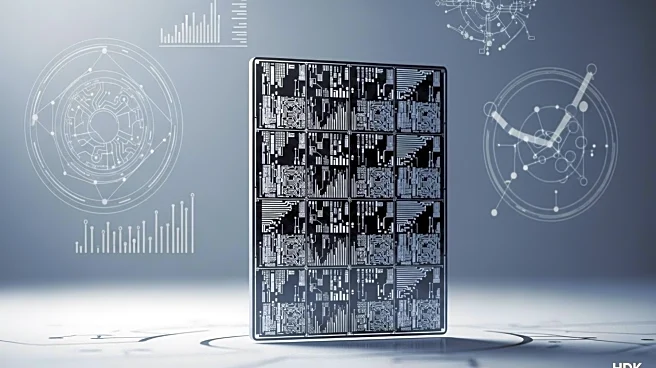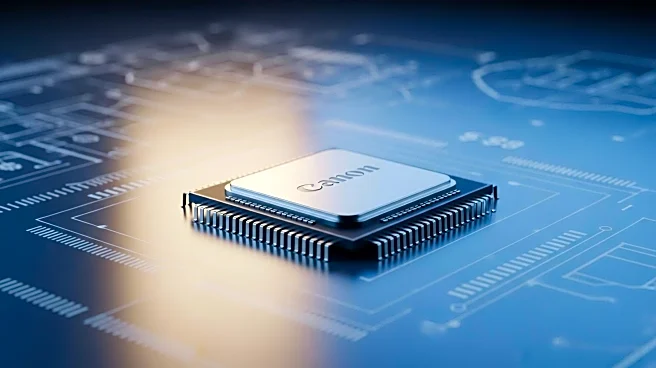What's Happening?
Recent advancements in resistive random-access memory (RRAM) chips have enabled precise and scalable analogue matrix equation solving, offering significant improvements in speed and energy efficiency. The technology leverages extreme parallelism to solve matrix equations in a single step, with experimental results showing convergence within 120 nanoseconds for 4x4 matrices. This development is particularly notable for its ability to outperform traditional digital processors, such as GPUs and ASICs, in both throughput and energy efficiency. The analogue matrix computation (AMC) system achieves this by utilizing a BlockAMC mechanism, which scales efficiently with matrix size, reducing the number of operations needed for real-world applications.
Why It's Important?
The introduction of AMC systems using RRAM chips marks a significant leap forward in computational technology, potentially transforming industries reliant on complex matrix calculations. This includes fields such as signal processing, machine learning, and scientific computing, where speed and energy efficiency are critical. By surpassing the performance of digital processors, AMC systems could lead to more efficient data centers and lower operational costs. The scalability and robustness of these systems also suggest potential for widespread adoption, offering a competitive edge in technology-driven sectors.
What's Next?
Future research is expected to focus on integrating larger-scale LP-INV with HP-MVM on a single chip, which could further enhance performance and efficiency. This integration would require dedicated chip design and verification processes. Additionally, advancements in operational amplifiers (OPAs) could lead to even faster response times, potentially achieving up to three orders of magnitude higher throughput than current digital processors. As the technology matures, it may see broader implementation across various computational platforms.
Beyond the Headlines
The development of AMC systems using RRAM chips also raises questions about the future of digital processing technology. As analogue systems become more efficient, there may be a shift in how computational tasks are approached, potentially leading to new paradigms in computer architecture. This could influence the design of future processors and impact the semiconductor industry, prompting a reevaluation of current manufacturing and design practices.











